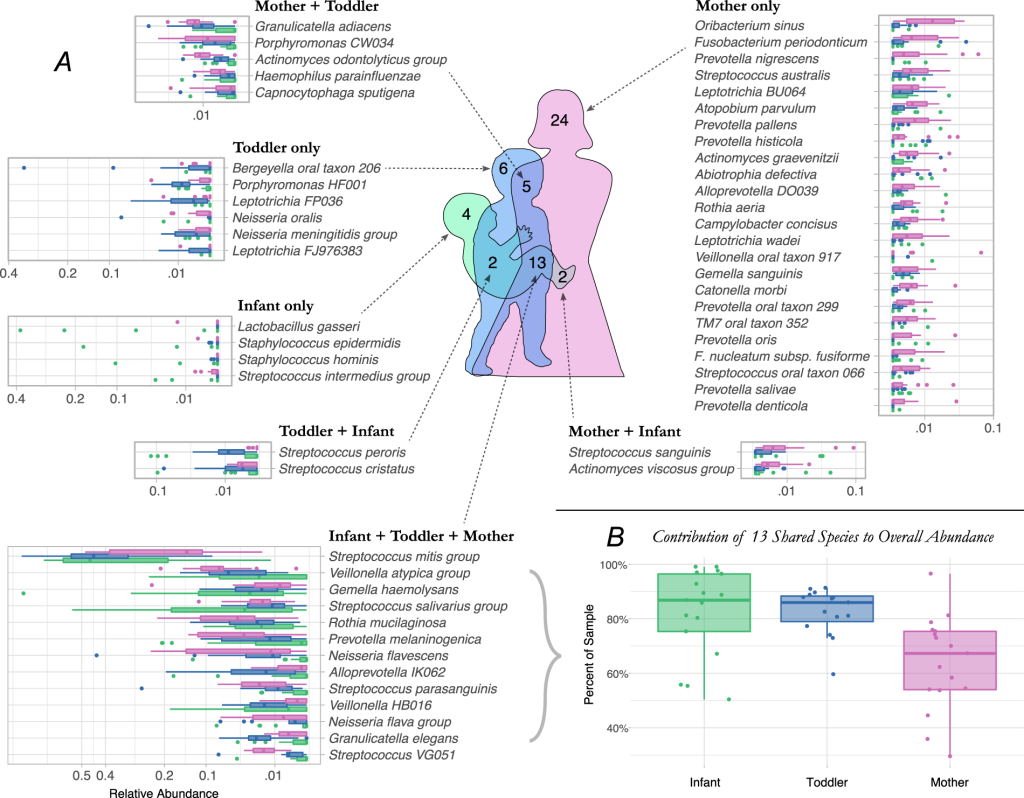Unveiling The Untamed: Exploring The Diverse World Of Mixed Bacterial Flora With No Predominating Type – Take Action Now!
Mixed Bacterial Flora with No Predominating Type: A Comprehensive Overview
Greetings, Plant lover!
Welcome to our informative article on mixed bacterial flora with no predominating type. In this piece, we will explore the various aspects of this topic, providing you with valuable insights and knowledge. So, let’s dive in and explore the fascinating world of bacterial flora!
3 Picture Gallery: Unveiling The Untamed: Exploring The Diverse World Of Mixed Bacterial Flora With No Predominating Type – Take Action Now!



Introduction
The world of bacteria is diverse and complex, with countless species coexisting in various environments. Mixed bacterial flora with no predominating type refers to a scenario where different bacterial strains are present, but none of them dominate the ecosystem. This phenomenon is commonly observed in natural habitats, including soil, water bodies, and even the human body. Understanding this unique microbial composition is crucial in uncovering the intricate web of interactions that shape our environment.
The complexity of mixed bacterial flora arises from their diverse metabolic capabilities and genetic diversity. This allows them to thrive in different conditions, contributing to the overall stability and functionality of the ecosystem. By studying these microbial communities, scientists gain valuable insights into their roles in nutrient cycling, disease prevention, and even biotechnological applications.

Image Source: frontiersin.org
In this article, we will explore the what, who, when, where, why, and how of mixed bacterial flora with no predominating type, shedding light on its importance and implications.
What is Mixed Bacterial Flora with No Predominating Type?
Mixed bacterial flora with no predominating type refers to a situation where multiple bacterial species coexist in an ecosystem without any single strain dominating the population. Instead, these bacteria maintain a delicate balance, each contributing to the overall functionality and stability of the community.
In such scenarios, the absence of a predominant bacterial type allows for increased biodiversity and resilience within the ecosystem. This phenomenon is commonly observed in natural habitats and plays a crucial role in maintaining a healthy and functioning environment.
The Diversity of Bacterial Species
The diversity of bacterial species within mixed flora communities is astounding. Each bacterial strain possesses unique characteristics, including differences in morphology, metabolism, and genetic makeup. This diversity ensures that various ecological niches are filled, enabling the efficient utilization of resources and the overall balance of the ecosystem.
The Complexity of Interactions

Image Source: springernature.com
Within mixed bacterial flora, intricate interactions occur between different species. These interactions can range from mutualistic relationships, where both species benefit, to competitive interactions, where strains compete for resources. These complex relationships contribute to the stability and functionality of the community as a whole.
Environmental Factors
Environmental factors such as temperature, pH levels, nutrient availability, and oxygen concentration play a significant role in shaping the composition of mixed bacterial flora. Certain bacterial strains may thrive in specific conditions, while others struggle, leading to a diverse and dynamic microbial community.
Role in Nutrient Cycling
Mixed bacterial flora play a vital role in nutrient cycling within ecosystems. Through processes like decomposition and nitrogen fixation, these bacteria contribute to the recycling of essential elements, ensuring the availability of nutrients for other organisms.
Implications for Human Health
The study of mixed bacterial flora is not limited to natural habitats; it also has implications for human health. The human body is home to a complex microbial community, including various bacterial strains. Disruptions in this delicate balance can lead to health issues, emphasizing the importance of understanding and maintaining a diverse bacterial flora.
Who Studies Mixed Bacterial Flora with No Predominating Type?

Image Source: springernature.com
The study of mixed bacterial flora involves a multidisciplinary approach, bringing together scientists from various fields. Microbiologists, ecologists, geneticists, and bioinformaticians collaborate to unravel the complexities of these microbial communities.
Microbiologists focus on isolating and identifying different bacterial strains within mixed flora, studying their physiological characteristics and interactions. Ecologists investigate the ecological roles of these bacteria and their impact on ecosystem dynamics. Geneticists delve into the genetic makeup of bacterial strains, uncovering valuable insights into their evolutionary history and potential applications.
Lastly, bioinformaticians employ advanced computational techniques to analyze large datasets generated from studying these complex communities. By combining their expertise, these scientists contribute to our understanding of mixed bacterial flora and its significance in various fields.
When and Where can Mixed Bacterial Flora with No Predominating Type be Found?
Mixed bacterial flora can be found in diverse environments around the globe. From the depths of the oceans to the soils of rainforests, these communities thrive in different ecosystems. They can also be found in the human body, residing in various organs and contributing to our overall health.
The presence of mixed bacterial flora depends on numerous factors, including the availability of resources and the prevailing environmental conditions. These communities adapt to their surroundings, ensuring their survival and contributing to the overall functionality of the ecosystem.
Why is the Study of Mixed Bacterial Flora with No Predominating Type Important?
The study of mixed bacterial flora with no predominating type is of paramount importance for several reasons:
Ecosystem Functionality
Understanding the roles of different bacterial strains within mixed flora communities allows us to comprehend the intricate web of interactions that shape ecosystems. By studying the functionality of these communities, we can gain insights into nutrient cycling, disease prevention, and overall ecosystem stability.
Human Health
Research on mixed bacterial flora in the human body has revealed its crucial role in maintaining our health. Disruptions in this delicate balance can lead to various health issues, emphasizing the importance of studying and preserving a diverse bacterial flora.
Biotechnological Applications
Mixed bacterial flora holds immense potential for biotechnological applications. From the production of enzymes and biofuels to the bioremediation of polluted environments, these communities offer valuable resources and solutions.
Conservation and Preservation
Understanding mixed bacterial flora is vital for the conservation and preservation of natural habitats. By recognizing the significance of these communities, steps can be taken to ensure their protection, maintaining biodiversity and ecological stability.
Scientific Advancements
The study of mixed bacterial flora contributes to scientific advancements in various fields, including microbiology, ecology, and genetics. By unraveling the complexities of these communities, scientists pave the way for groundbreaking discoveries and innovative technologies.
How is Mixed Bacterial Flora with No Predominating Type Studied?
The study of mixed bacterial flora encompasses various techniques and approaches:
Culture-Dependent Methods
Microbiologists employ culture-dependent methods to isolate and identify different bacterial strains within mixed flora. These techniques involve growing bacteria in laboratory conditions, allowing for their identification and characterization.
Next-Generation Sequencing
Next-generation sequencing technologies have revolutionized the study of mixed bacterial flora. These high-throughput techniques allow for the simultaneous analysis of thousands of bacterial strains within a community, providing valuable insights into their genetic makeup and interactions.
Metagenomics
Metagenomics involves the direct sequencing of DNA extracted from environmental samples, without the need for bacterial isolation or cultivation. This approach provides a comprehensive picture of the microbial community, uncovering the hidden diversity within mixed bacterial flora.
Functional Genomics
Functional genomics focuses on understanding the functional capabilities of different bacterial strains within mixed flora communities. By studying gene expression and metabolic pathways, scientists gain insights into their ecological roles and potential applications.
Bioinformatics
Bioinformatics plays a crucial role in analyzing the vast amounts of data generated from studying mixed bacterial flora. Advanced computational techniques, including data mining and machine learning, help unravel the complexities of these communities and identify patterns within their interactions.
Advantages and Disadvantages of Mixed Bacterial Flora with No Predominating Type
Like any ecological phenomenon, mixed bacterial flora with no predominating type has both advantages and disadvantages:
Advantages
1. Increased biodiversity: Mixed bacterial flora allows for a high level of biodiversity within ecosystems, contributing to their overall stability and resilience.
2. Nutrient cycling: These communities play a vital role in nutrient cycling, ensuring the efficient utilization of resources and the availability of essential elements for other organisms.
3. Disease prevention: Certain bacterial strains within mixed flora communities can prevent the proliferation of harmful pathogens, promoting overall ecosystem health.
4. Biotechnological applications: Mixed bacterial flora offer valuable resources for biotechnological applications, including the production of enzymes, biofuels, and the bioremediation of polluted environments.
5. Ecological research: Studying mixed bacterial flora contributes to our understanding of ecosystem dynamics, providing insights into the functioning and stability of natural habitats.
Disadvantages
1. Disease potential: While some bacterial strains within mixed flora communities can prevent diseases, others may pose a threat to human and ecosystem health.
2. Imbalance and disruption: Disruptions in the delicate balance of mixed bacterial flora can lead to ecological imbalances and the loss of functional diversity within ecosystems.
3. Human health issues: Imbalances in the human microbiome, including mixed bacterial flora, can lead to various health issues, emphasizing the need for a diverse and well-maintained bacterial community.
4. Unknown interactions: The interactions between different bacterial strains within mixed flora communities are still not fully understood, leaving room for unknown consequences and potential risks.
5. Complexity of study: Studying mixed bacterial flora is a complex and challenging task, requiring interdisciplinary approaches and advanced techniques for accurate analysis and interpretation.
Frequently Asked Questions (FAQ)
1. Can mixed bacterial flora be harmful to humans?
While mixed bacterial flora can have positive effects on human health, imbalances or the presence of harmful strains can lead to health issues. It is essential to maintain a diverse and well-regulated microbial community in the human body.
2. Are there any specific conditions where mixed bacterial flora thrive?
Mixed bacterial flora can thrive in various conditions, depending on factors such as temperature, nutrient availability, and environmental stability. They are commonly found in natural habitats such as soil and water bodies.
3. How does mixed bacterial flora contribute to nutrient cycling?
Mixed bacterial flora play a crucial role in nutrient cycling through processes like decomposition and nitrogen fixation. They break down organic matter and convert inaccessible forms of nutrients into usable forms, ensuring their availability for other organisms.
4. Can mixed bacterial flora be engineered for biotechnological applications?
Yes, mixed bacterial flora holds immense potential for biotechnological applications. By understanding the functional capabilities of different strains within these communities, scientists can harness their metabolic capacities for various purposes, including the production of valuable compounds and the remediation of polluted environments.
5. How can we preserve and maintain a diverse bacterial flora?
Preserving and maintaining a diverse bacterial flora requires adopting practices that promote ecological balance and minimize disruptions. This includes avoiding the overuse of antibiotics, consuming a balanced diet, and ensuring proper hygiene practices to preserve the natural microbial community within and around us.
Conclusion
In conclusion, mixed bacterial flora with no predominating type is a fascinating and complex phenomenon observed in various ecosystems. The intricate interactions and diversity of bacteria within these communities contribute to the overall functionality and stability of the ecosystem. Understanding mixed bacterial flora is crucial for ecological research, human health, and biotechnological advancements. By studying their roles, interactions, and potential applications, scientists pave the way for a deeper understanding of the microbial world and its invaluable contributions to our lives.
Take Action Now!
Now that you have a better understanding of mixed bacterial flora with no predominating type, why not explore further? Dive into the world of microbiology, ecology, or genetics to unravel the mysteries of these microbial communities. Contribute to the preservation of our environment and advocate for the importance of maintaining a diverse and well-regulated bacterial flora. Together, we can unlock the secrets of the microbial world and harness its potential for a better future.
Final Remarks
Disclaimer: The information provided in this article is for educational and informational purposes only. It is not intended to be a substitute for professional advice or diagnosis. Always consult a qualified expert for specific concerns regarding your health or the environment.
This post topic: Flora


